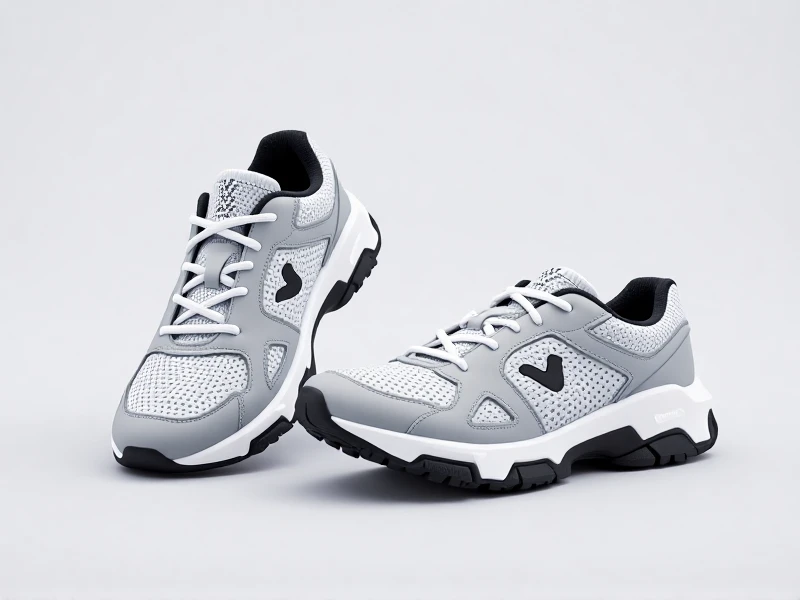
Discover Your Perfect Match: The Ultimate Guide to Running Shoes
First, considering the user's context as an SEO expert request, they likely need content that ranks well while feeling authentic. The challenge is balancing keyword optimization with natural flow. I'll focus on creating value-driven content that answers common searcher questions.
For structure, I'm planning: Human-like title: Opening hook about the running shoe selection struggle Core sections: Cushioning importance, fit tips, terrain considerations SEO-wise, I'll naturally repeat "running shoes" while varying phrases like "road runners" or "training footwear"
Noticing the user emphasized no AI traces - I'll avoid robotic phrasing by including personal touches like "we've been there" and practical advice from real runner experiences. The tone should feel like a knowledgeable friend talking.
Since word count is strict at 400 words, I'll keep paragraphs concise but detailed enough to be useful. Final check will ensure all formatting instructions like <> for title and no escape characters are followed precisely before delivery.
Finding the perfect pair of running shoes isn't just about looks; it's foundational for performance, comfort, and injury prevention. Whether you're training for a marathon or hitting the pavement for a quick jog, the right running shoes make all the difference. This guide breaks down key factors to consider on your journey.
Prioritize Fit & Feel: The number one rule? Comfort! Your ideal size might vary between brands, so always try running shoes on later in the day when feet are slightly swollen. Ensure a thumb's width of space between your longest toe and the end of the shoe. The heel should cradle snugly without slipping, and the midfoot should feel secure, not constricted. Walk and jog around the store – listen to your feet.
Understand Your Gait & Support Needs: Your foot’s natural motion dictates cushioning and stability requirements.
- Neutral Running Shoes: Suit runners with efficient, stable foot strikes. They offer ample cushioning without extra arch corrections.
- Stability Running Shoes: Ideal for moderate overpronators (feet rolling inward). They feature supportive elements like medial posts or dual-density foam to guide the foot.
- Motion Control Shoes: Provide maximum support for severe overpronation, often with stiffer midsole materials.
- Cushioning Type: Consider firmness. Soft cushioning absorbs impact for easy recovery runs, while firmer foam offers responsive, propulsive energy for speed. Some models expertly blend both.
Match the Shoe to Your Terrain & Training:
- Road Running Shoes: Optimized for pavement and hard surfaces. Focus on cushioning and durability.
- Trail Running Shoes: Tackle uneven terrain with aggressive outsoles for grip, protective rock plates, and often reinforced uppers for debris resistance.
- Racing Flats/Competition Shoes: Ultra-lightweight and propulsive for race day speed, prioritizing efficiency over cushioning.
- Daily Trainers: Your workhorse pair delivering reliable performance and cushioning for most miles and workouts.
Don't Ignore Durability & Lifespan: Quality running shoes aren't cheap, but their construction matters. Expect 300-500 miles before the midsole foam breaks down significantly, losing shock absorption. Rotating between two pairs extends durability and lets shoes fully decompress.
Incremental Innovation: Research brands constantly evolve materials and tech:
- Midsole Foams: Modern compounds like PEBA, TPU, and nitrogen-infused foams deliver unprecedented energy return and responsiveness alongside cushioning.
- Energy Plates: Carbon fiber or composite plates embedded in midfoot/forefoot areas boost propulsion efficiency, popularized by elite racing shoes.
- Sustainable Options: Many brands now incorporate recycled materials in uppers and midsoles without sacrificing performance.
Your stride is unique. While reviews help, prioritize personal fit and feel when selecting performance running shoes. Visit a specialty running shop for gait analysis and expert advice. Investing time and thought into finding your perfect pair pays off in miles of comfort and improved performance. Happy running!